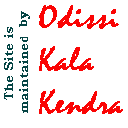|
|
|
 |
BHARATNATYAM |
|||
| Bharata
Natyam is poetry in motion. Tracing its hoary origins in
the Natya Sastra, written by the great sage Bharata, it
is a highly traditional & stylized dance form.
Crystallised in the cast-iron mould of Bharata's
technique, this art form grossly disallows new-fangled
innovations or gimmicks except in repertoire & forms
of presentation. Bharata Natyam has been immortalised in
successive generations, as much by the sinuous grace of
great dancers as by the nimble fingers of renowned
sculptors who have demonstrated the perfection of
Bharata's technique in the flowing lines of temple
structures. Bharathanatyam's blend of the abstract &
the emotional is derived from its fusion of two prime
elements, nritta (pure dance or dance without
interpretive meaning) & nritya (expressive dance).
Bharathanatyam derives much of its intense, dramatic
impact from the juxtaposition & contrast with which
both elements are utilised. Nritta comprises adavus,
which are the basic dance units of Bharathanatyam. Each
adavu contains 3 essential elements, a basic standing
position (sthanaka), movement of the legs & feet
(chari) & decorative hand gestures (nritta-hasta). In 1917, Rabindranath Tagore introduced dance into the curriculum of the cultural centre, Shanthiniketan. In 1926, E.Krishna Iyer, a lawyer of Madras, after failing in efforts to secure audiences for the hereditary devadasi temple dancers, studied Bharathanatyam himself & performed before respectable gps. dresses as a traditional devadasi dancer.Pandanallur Meenakshi Sundaram Pillai for Bharatanatyam, Vallathol Narayan Menon for Kathakali dance & drama, Guru Krishnan Panicker for Mohini Attam are few of the great teachers who gave their heart & soul for the growth & sustainment of the various forms. Its present form was evolved by the Tanjore quartet namely Poniah Pillai & brothers. Earlier variedly known as Dasi Attam & Sadir, it was practised by Devadasis of the South Indian temples. It went into disrepute due to economic & social conditions & it was Rukmini Devi who gave it new life & respectability. Its format consists of Alarippu (invocation), Jathi Swaram (note combinations), Shabdam (notes & lyrics), Varnam (a combination of pure dance & abhinaya), lighter items like Padams & Javalis(all erotic) & finally the Thillana (again pure dance). On par with Rukmini Devi, there was Bala Saraswati, the Queen of Bharatanatyam. |
||||
|